Abstract
1 The acetyl, phenylacetyl, and diphenylacetyl esters of 4-hydroxyquinuclidine and their methiodides have been prepared.
2 4-Diphenylacetoxyquinuclidine methiodide has higher affinity for muscarinic receptors than 4-diphenylacetoxy-N-methylpiperidine methiodide (4-DAMP methiodide) but it is less selective. At 30°C its affinity for receptors in ileum is about 5 times that for receptors in atria, a difference similar to that found with diphenylacetoxytrophine methiodide. With 4-DAMP methiodide affinity for receptors in the ileum is over 10 times that for receptors in atria.
3 4-Diphenylacetoxyquinuclidine methiodide has higher affinity for muscarinic receptors than 3-diphenylacetoxyquinuclidine hydrochloride or its methiodide.
4 4-Acetoxyquinuclidine hydrochloride has less than one-hundredth of the activity of 3-acetoxyquinuclidine hydrochloride (acecyclidine) on guinea-pig ileum, atria, and rat fundus: however, 4-acetoxyquinuclidine methiodide is consistently more active than its 3-isomer, though it is only about 1/25 times as active as acecyclidine.
5 4-Acetoxyquinuclidine hydrochloride is only a poor substrate for electric eel acetylcholinesterase: its affinity is similar to that of acecyclidine but it is greatly reduced by methylation.
6 The relations between the structure and activity of the agonists are very different from the relations between the structure and affinity of the antagonists, which supports the view that agonists and antagonists bind to different conformations of the muscarinic receptor.
Full text
PDF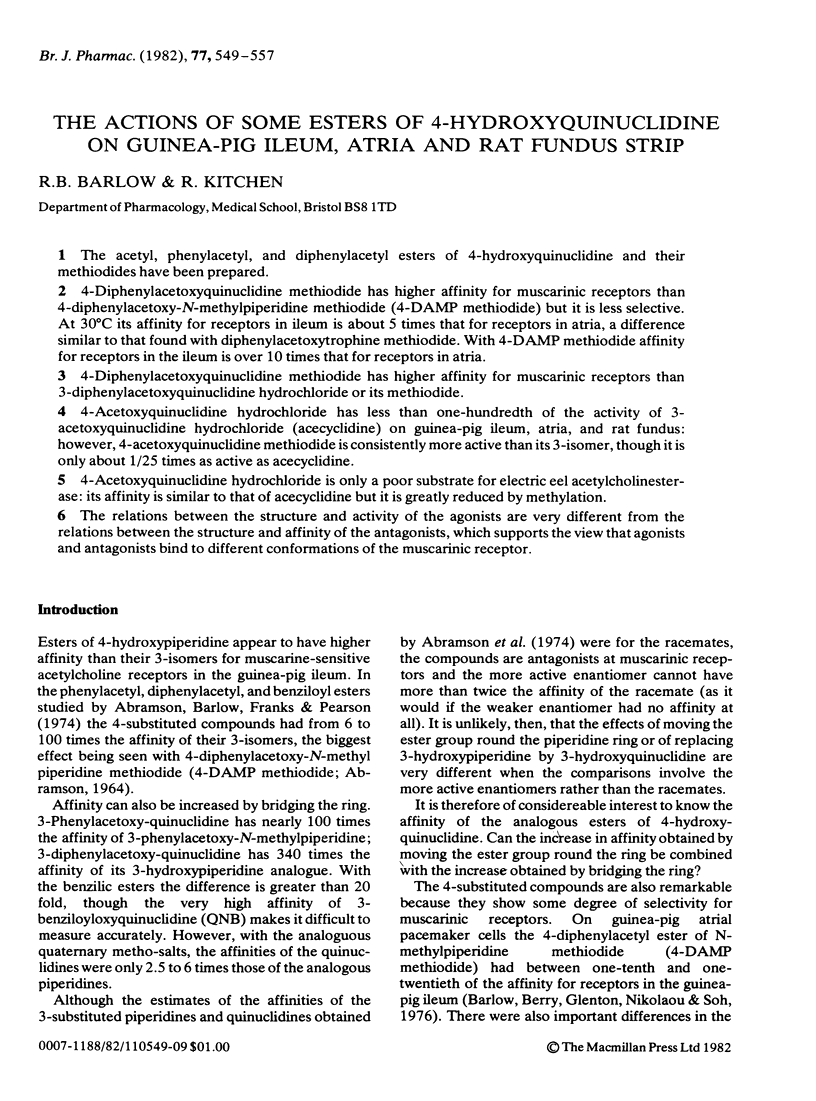
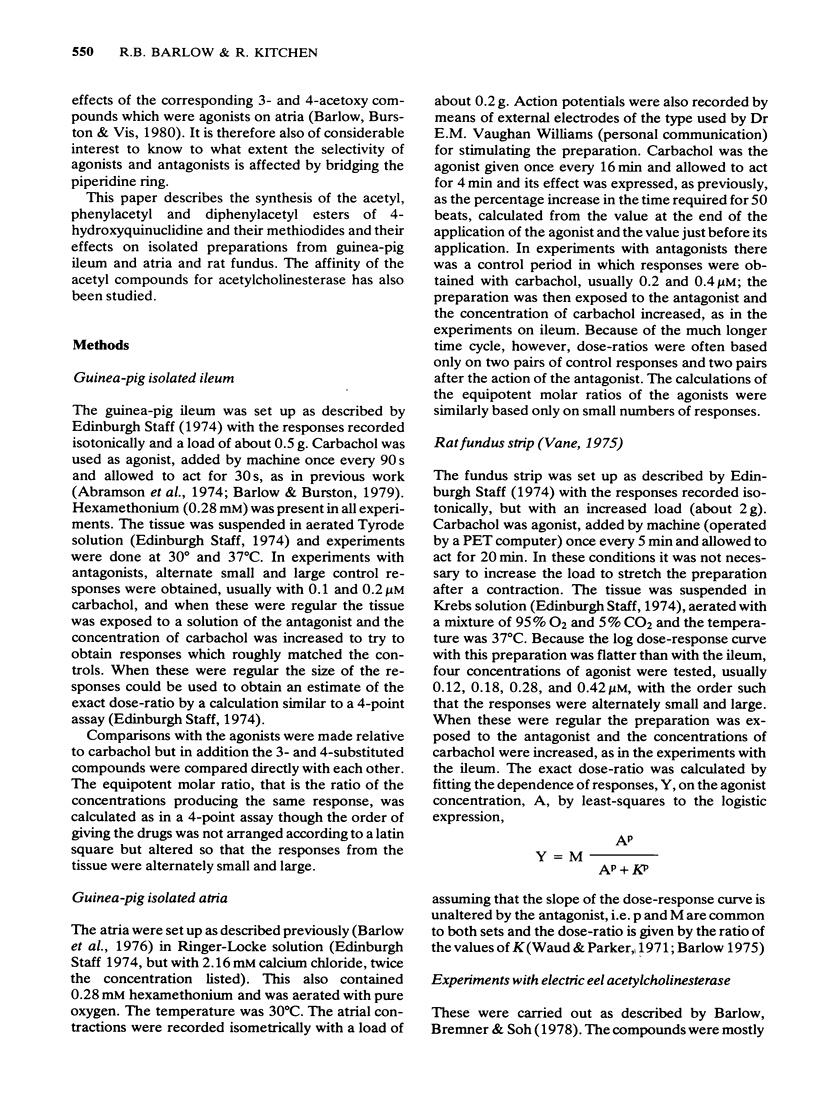
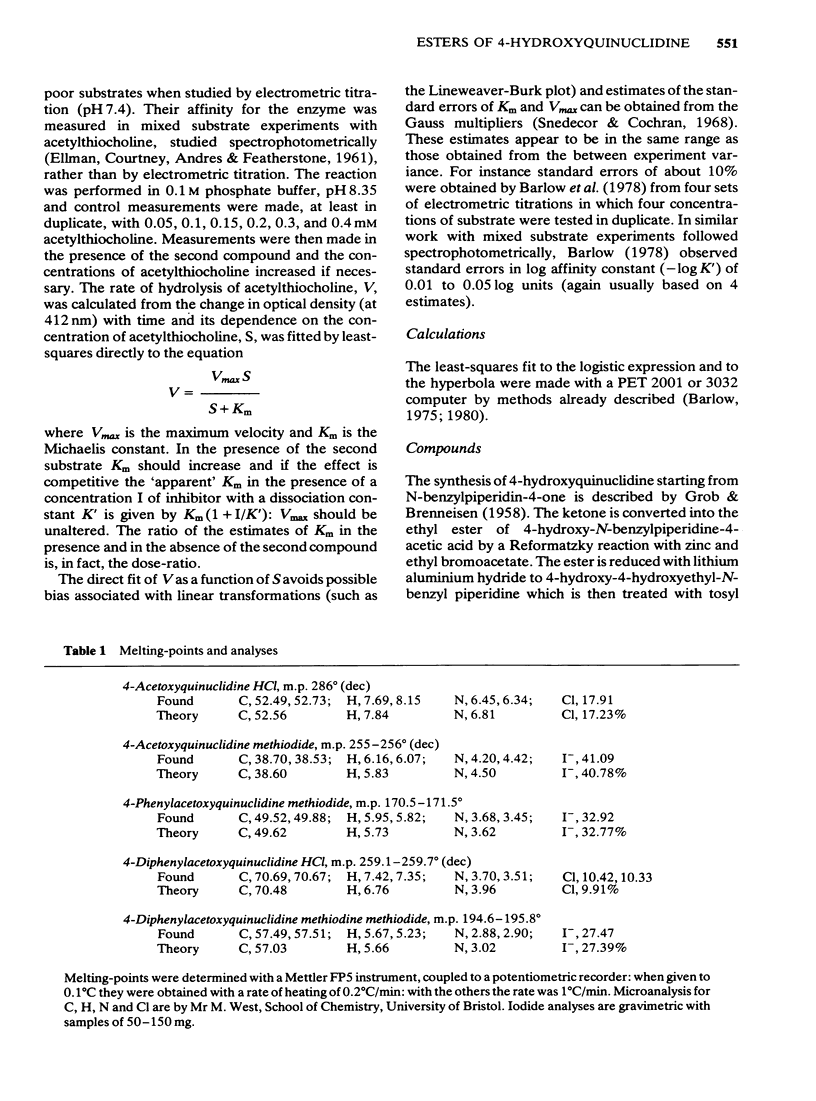
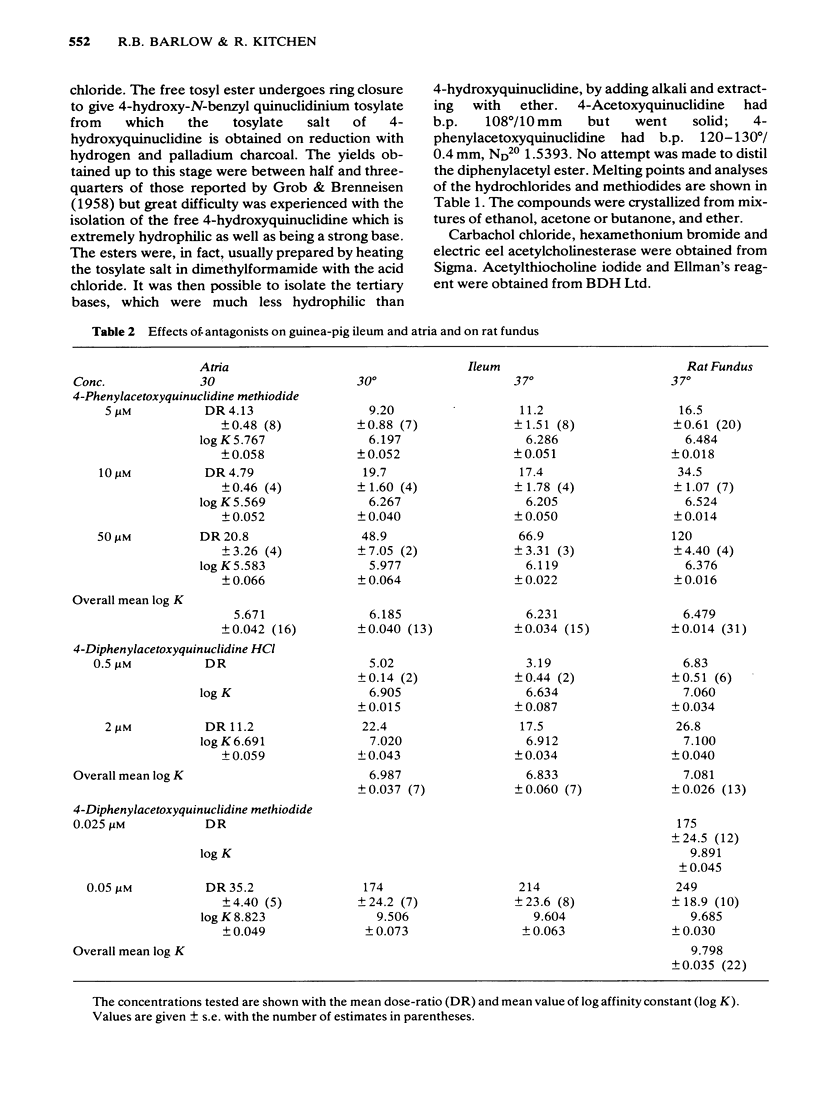
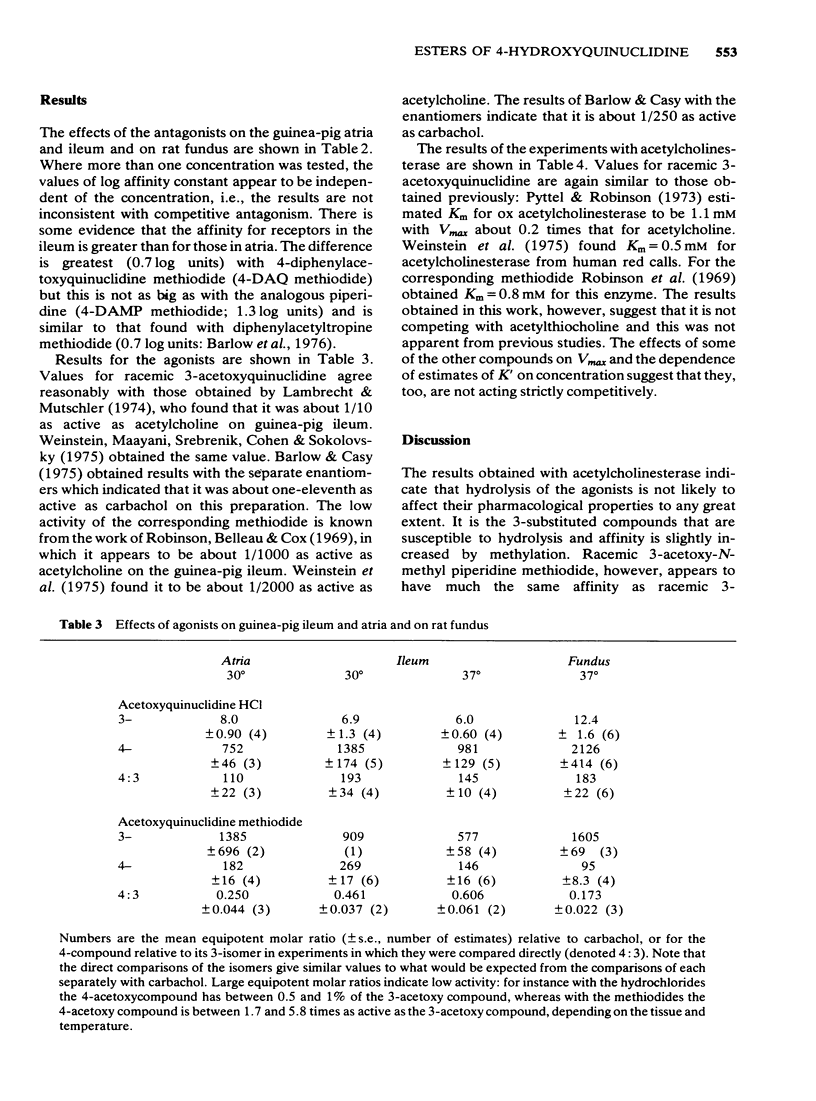
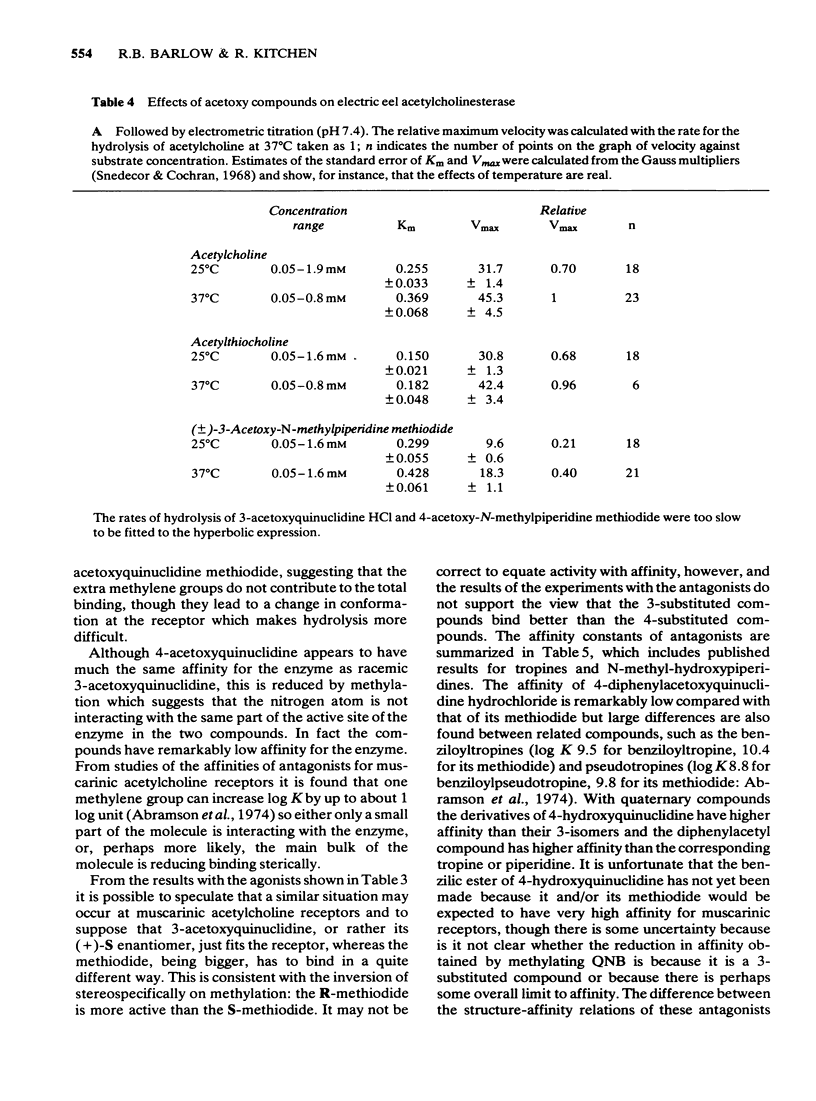
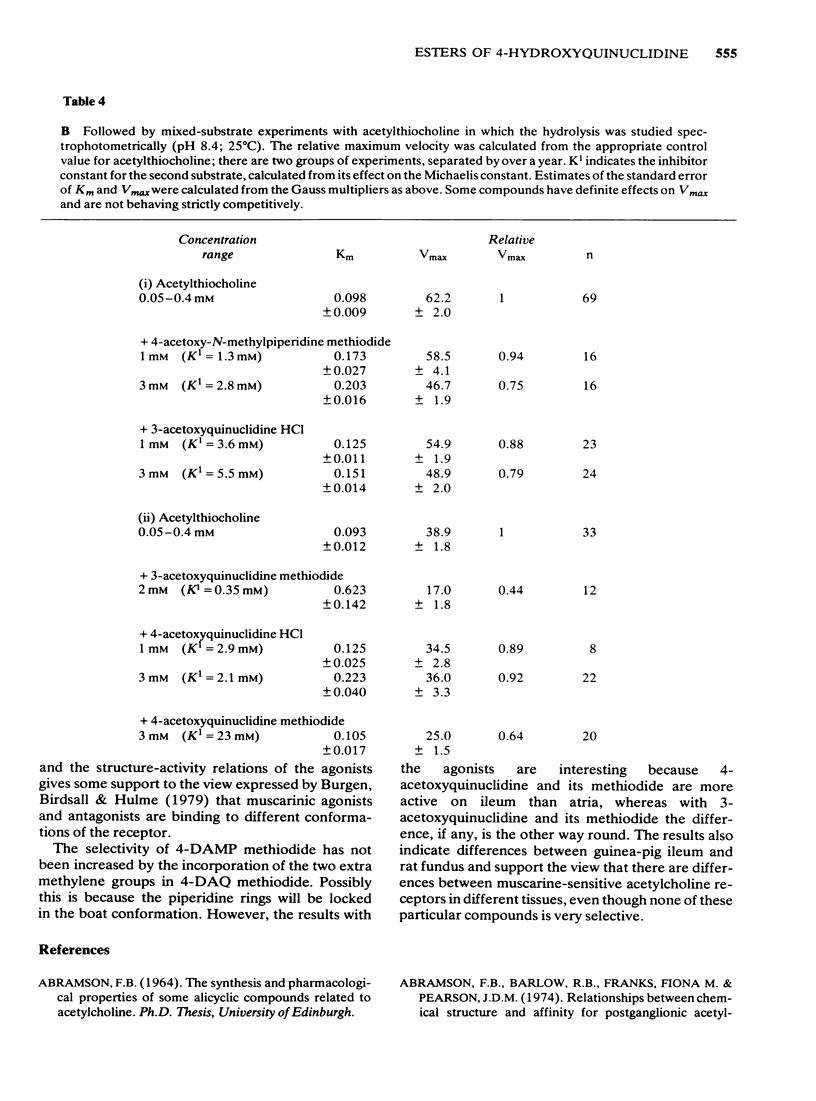
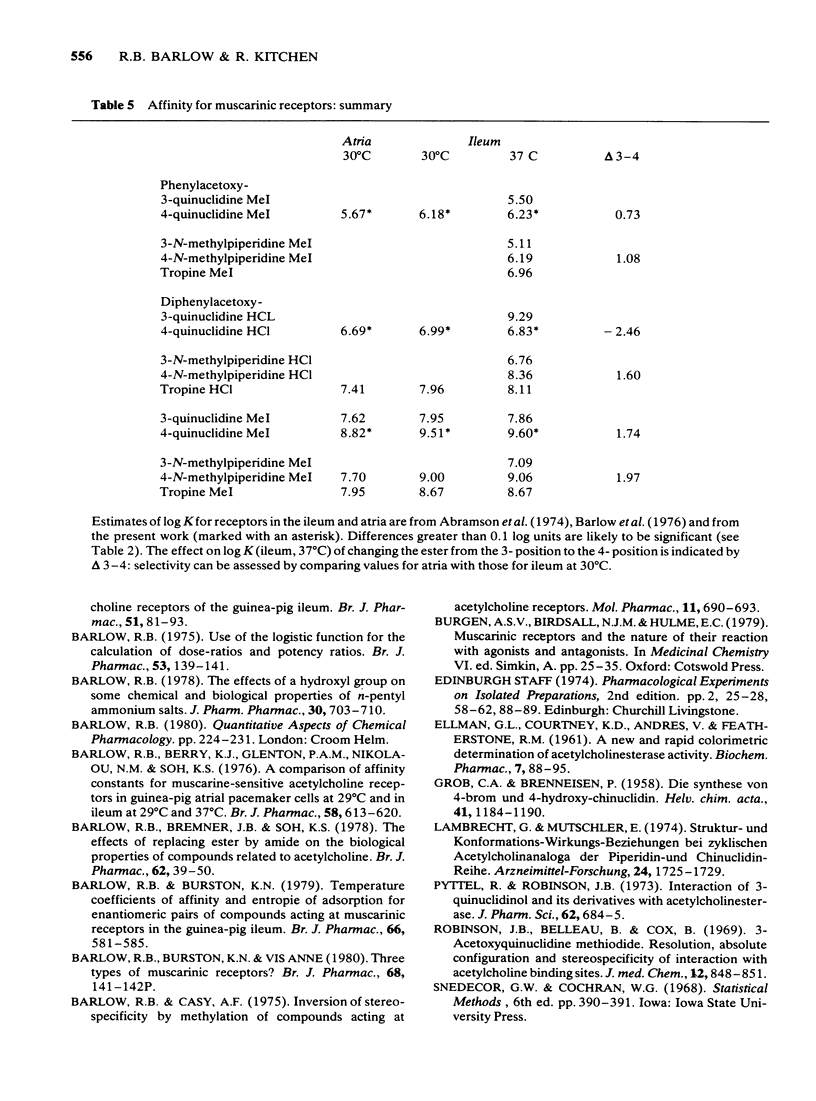
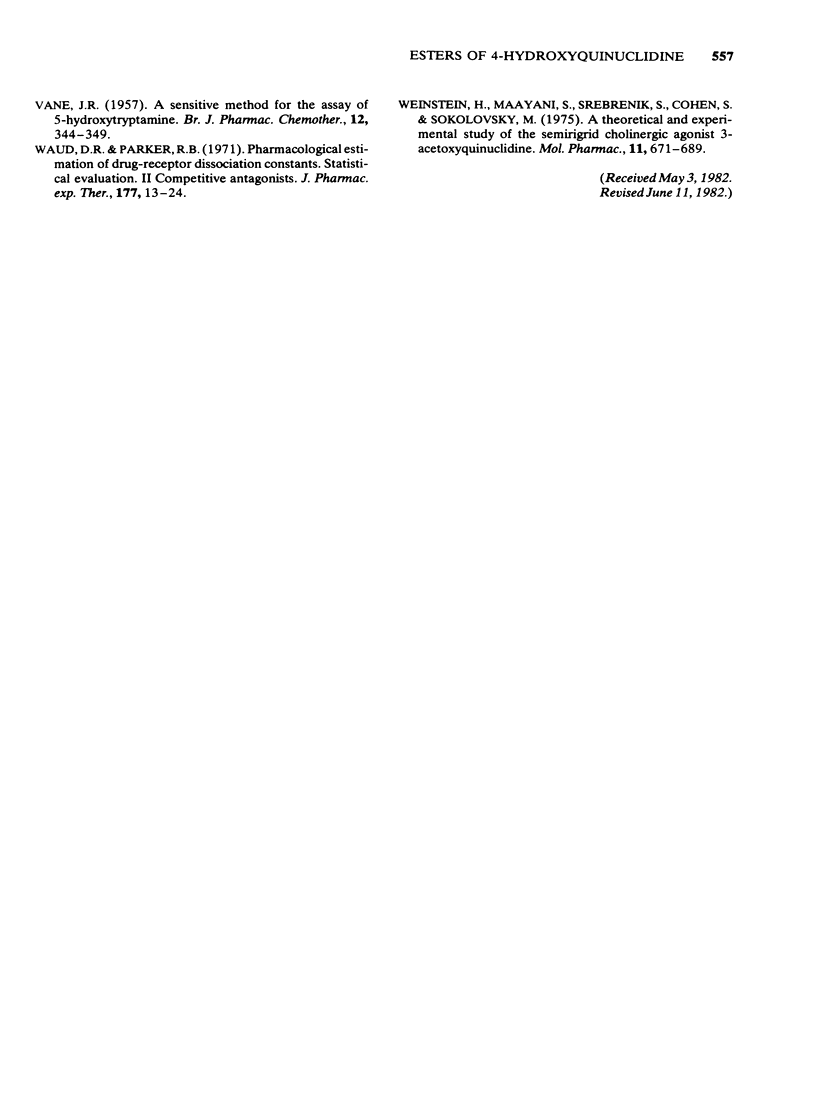
Selected References
These references are in PubMed. This may not be the complete list of references from this article.
- Barlow R. B., Berry K. J., Glenton P. A., Nilolaou N. M., Soh K. S. A comparison of affinity constants for muscarine-sensitive acetylcholine receptors in guinea-pig atrial pacemaker cells at 29 degrees C and in ileum at 29 degrees C and 37 degrees C. Br J Pharmacol. 1976 Dec;58(4):613–620. doi: 10.1111/j.1476-5381.1976.tb08631.x. [DOI] [PMC free article] [PubMed] [Google Scholar]
- Barlow R. B., Bremner J. B., Soh K. S. The effects of replacing ester by amide on the biological properties of compounds related to acetylcholine. Br J Pharmacol. 1978 Jan;62(1):39–50. doi: 10.1111/j.1476-5381.1978.tb07004.x. [DOI] [PMC free article] [PubMed] [Google Scholar]
- Barlow R. B., Burston K. N. Temperature coefficients of affinity and entropies of adsorption from enantiomeric pairs of compounds acting at muscarinic receptors in the guinea-pig ileum. Br J Pharmacol. 1979 Aug;66(4):581–585. doi: 10.1111/j.1476-5381.1979.tb13697.x. [DOI] [PMC free article] [PubMed] [Google Scholar]
- Barlow R. B., Burston K. N., Vis A. Three types of muscarinic receptors? [proceedings]. Br J Pharmacol. 1980 Jan;68(1):141P–142P. [PMC free article] [PubMed] [Google Scholar]
- Barlow R. B., Casy A. F. Inversion of stereospecificity by methylation of compounds acting at acetylcholine receptors. Mol Pharmacol. 1975 Sep;11(5):690–693. [PubMed] [Google Scholar]
- Barlow R. B. The effects of a hydroxyl group on some chemical and biological properties of n-pentyl ammonium salts. J Pharm Pharmacol. 1978 Nov;30(11):703–710. doi: 10.1111/j.2042-7158.1978.tb13369.x. [DOI] [PubMed] [Google Scholar]
- Barlow R. B. Use of the logistic function for the calculation of dose-ratios and potency ratios. Br J Pharmacol. 1975 Jan;53(1):139–141. doi: 10.1111/j.1476-5381.1975.tb07341.x. [DOI] [PMC free article] [PubMed] [Google Scholar]
- ELLMAN G. L., COURTNEY K. D., ANDRES V., Jr, FEATHER-STONE R. M. A new and rapid colorimetric determination of acetylcholinesterase activity. Biochem Pharmacol. 1961 Jul;7:88–95. doi: 10.1016/0006-2952(61)90145-9. [DOI] [PubMed] [Google Scholar]
- Lambrecht G., Mutschler E. Struktur- und Konformations-Wirkungs-Beziehungen bei zyklischen Acetylcholinanaloga der Piperidin- und Chinuclidin-Reihe. Arzneimittelforschung. 1974 Nov;24(11):1725–1729. [PubMed] [Google Scholar]
- Pyttel R., Robinson J. B. Interaction of 3-quinuclidinol and its derivatives with acetylcholinesterase. J Pharm Sci. 1973 Apr;62(4):684–685. doi: 10.1002/jps.2600620434. [DOI] [PubMed] [Google Scholar]
- Robinson J. B., Belleau B., Cox B. 3-acetoxyquinuclidine methiodide. Resolution, absolute configuration, and stereospecificity of interaction with the acetylcholine binding sites. J Med Chem. 1969 Sep;12(5):848–851. doi: 10.1021/jm00305a030. [DOI] [PubMed] [Google Scholar]
- VANE J. R. A sensitive method for the assay of 5-hydroxytryptamine. Br J Pharmacol Chemother. 1957 Sep;12(3):344–349. doi: 10.1111/j.1476-5381.1957.tb00146.x. [DOI] [PMC free article] [PubMed] [Google Scholar]
- Waud D. R., Parker R. B. Pharmacological estimation of drug-receptor dissociation constants. Statistical evaluation. II. Competitive antagonists. J Pharmacol Exp Ther. 1971 Apr;177(1):13–24. [PubMed] [Google Scholar]
- Weinstein H., Maayani S., Srebrenik S., Cohen S., Sokolovsky M. A theoretical and experimental study of the semirigid cholinergic agonist 3-acetoxyquinuclidine. Mol Pharmacol. 1975 Sep;11(5):671–689. [PubMed] [Google Scholar]


